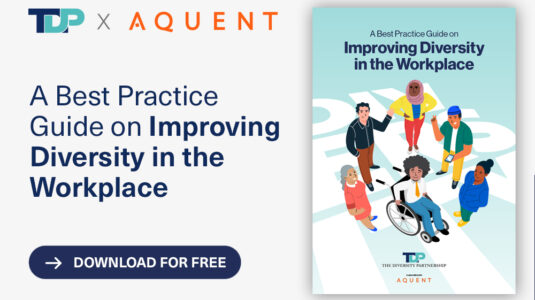Key Takeways
- Culturally sensitive topics require heightened awareness and respect for diverse perspectives, beliefs, and values.
- Companies should create a plan to address these topics in the workplace and support marginalised communities.
- Leaders can make a formal statement, offer Employee Assistance Program (EAP) resources, encourage self-care, and be a voice of change.
- Approaching culturally sensitive topics with confidence can lead to positive business outcomes and societal impact.
On May 24, 2019, Taiwan became the first Asian nation to legalise same-sex marriage, inspiring a surge of hope and advocacy for the LGBTQ+ community. As the world celebrated this milestone, the conversation around LGBTQ+ rights and the importance of allyship became more vital than ever.
In 2020, the Black Lives Matter movement peaked. It sparked a global outcry against systemic racism and injustice in response to the tragic deaths of George Floyd, Breonna Taylor, and Ahmaud Arbery.
Roughly three years later, Russia launched a war against Ukraine. The pain and suffering of the Ukrainian people caught in the crossfire cannot be put into words. As the war rages on, it's impossible not to feel helpless, knowing so many innocent lives have been lost or forever changed.
Furthermore, as refugees flee from war-torn nations like Syria and Afghanistan, the world is debating the humanitarian crisis, the importance of immigration policies, and the need for aid.
The list goes on and on.
What do these stories mean for a leader? How do they navigate hot-button issues?
As these stories unfold, they challenge our perspectives, encouraging empathy and understanding in our increasingly interconnected world. As a leader, creating an inclusive work environment where all employees can feel like they belong is essential. One evolving aspect of inclusion is the need for leaders to hold space for employees during external crises, specifically those that deeply impact marginalised communities.
Today, we're discussing how leaders can approach these trending culturally sensitive topics in the workplace, including what to do when the organisation says nothing, how to handle situations when personal beliefs do not align, and how to address inappropriate remarks made by team members.
But wait, before we dive into how to handle these tough situations, let's talk about why it's important. The answer is simple: you don't want to lose your exceptional employees.
As a leader, your goal is always to retain your most talented workers, and the environment is always the central factor when it comes to retention. If people leave your company as quickly as they enter—no matter the reason—you're closing the doors to diversity. And let's face it—diversity is one of corporate America's top social and business priorities today.
Now, let's dive into these topics, and how to handle them.
What are culturally sensitive topics?
Culturally sensitive topics are events or news stories that require a heightened level of awareness, understanding, and respect for diverse cultural perspectives, beliefs, and values. They affect everyone. But they deeply impact marginalised communities.
These topics include but are not limited to police brutality, women's reproductive rights, war devastation, mass shootings, and hate crimes against specific demographics, such as the Asian, LGBTQ+, Black, and Jewish communities. As a leader, it is crucial to understand how these events affect your team and create a plan to address them in the workplace.
Holding space for employees during upsetting events in the news

Some workplaces recognise the importance of holding space for employees during external crises and have implemented processes or policies to address these situations. Leaders in these organisations may hold meetings or provide resources such as Employee Assistance Programs (EAP) to support their employees during these difficult times.
Here are some cases of companies' solidarity efforts that stood as mavericks during hard times, even today:
Ben & Jerry's corporate activism against racial injustice
Ben & Jerry's prioritises transparency and accuracy in their discussions surrounding racial justice by working closely with their partners, Color of Change and the National Association for the Advancement of Colored People (NAACP). To further their commitment, the company has appointed an activism manager who is instrumental in leveraging their influence to bring about positive change.
In collaboration with Vox Media and The Who We Are Project, Ben & Jerry's has also launched the podcast “Who We Are: A Chronicle of Racism in America.” This podcast delves into the lesser-known aspects of America's history of racial inequality and highlights how state-sanctioned brutality and legal discrimination continue to impact Black Americans' opportunities for employment, housing, education, and wealth accumulation.
Airbnb's response to the war in Ukraine
The home-sharing platform announced that it would provide free, short-term housing to up to 100,000 Ukrainian refugees fleeing the conflict. Airbnb, along with its nonprofit arm, Airbnb.org, has been working with host communities and partnering with various NGOs to offer accommodations for displaced individuals and families.
Top companies' responses to the overturning of Roe v. Wade
In a daring display of solidarity for reproductive rights, leading U.S. companies like JPMorgan Chase, Starbucks, Patagonia, Netflix, Citigroup, and Microsoft, among others, have banded together in a remarkable commitment to bear the travel expenses of employees who need abortion services that are inaccessible in their home states.
By standing strong for disadvantaged communities, these organisations are not just making a difference in the lives of those affected but also sending a ripple of well-being and consolation throughout their own companies. By taking a stand, they're not only creating a better world but also a better workplace for all.
What can leaders do when the organisation says nothing?
Unfortunately, some workplaces do not have processes or policies in place to address trending, culturally sensitive topics. As a leader, you can take the following steps to support your team:
- Make a formal statement reminding your team of your open-door policy and commitment to holding space for those wanting to talk.
- Share any employee assistance program (EAP) resources available at your organisation. And rally for EAP support if your organisation does not offer it.
- Encourage self-care and remind your employees that taking personal time as needed will not impact their performance.
As a leader, it is necessary for you to step up and take charge. Remember, your team looks to you for guidance and support, especially in times of uncertainty. So, don't wait for the organisation to make a statement; be the voice of change. Show your team that you stand with them and that they can count on you. Make a statement and let your team know that they're not alone.
What can leaders do when personal beliefs do not align?

As a leader, it's essential to align with the company's shared values, even if personal beliefs do not align with the organisation's stance. Leaders can lean on shared company values to connect with their team members and build a sense of unity. If a leader finds they no longer share the same company values or that the values have changed and no longer serve them, it may be time to consider a new organisation that shares the same values.
Your role as a leader is to support your team and create a safe and inclusive work environment—both today and tomorrow and in any organisation you go to. So, focus on the shared company values and how they can be used to support your team during these difficult times.
How to address inappropriate remarks made by team members?

If a team member makes an inappropriate remark, follow these steps:
- Pre-meeting Tips: Set Rules of Engagement
Before having open discussions about sensitive topics, it's crucial to set rules of engagement. These rules are similar to commitments we ask our participants in our training programs to follow to help ensure everyone feels safe and respected during the conversation. An example of a commitment is asking all participants to lean into conversations, assuming positive intent from your teammates. As a leader, you can set the tone by leading with positive intent and asking more questions to ensure you understand what the employee is trying to communicate.
- Did the team member's message simply come out negatively?
Remember that sometimes remarks come out negatively, even though the intention was positive. As a leader, it's your responsibility to create space for the employee to respond and clarify their message. Don't try to articulate their message on their behalf or correct them. Instead, ask more questions. For example, ask the employee if they were trying to communicate a particular message and create space for their response.
- Should you call them out instantly?
Rather than assuming that you know what the employee meant, create space for their response, too. Sometimes, what you perceive as inappropriate behaviour or remarks may be an honest mistake or a lack of knowledge on the employee's part. By creating an open and respectful dialogue, you can learn more about your employees' perspectives and create a more inclusive workplace.
- What if the person was trying to create harm?
Unfortunately, some team members may try to cause harm with their remarks. In this case, it's crucial to remind them of the company's shared values and ask them to excuse themselves from the conversation if they cannot uphold them or the commitments made.
- Follow up with the employee using the SBI feedback method
After the conversation, follow up with the employee. You can use the Situation, Behaviour, Impact (SBI) feedback method to address the behaviour while acknowledging the employee's intention. This method is a great way to provide feedback that is both constructive and respectful.
The SBI feedback method was developed by the Center for Creative Leadership (CCL). It involves three simple steps:
- Situation—Describe the situation where the behaviour occurred.
- Behaviour—Describe the specific behaviour you observed.
- Impact—Describe the impact the behaviour had on you or others.
By using this method, you can address inappropriate remarks while acknowledging the employee's intention. This creates a constructive feedback loop that helps improve behaviour in the workplace.
The world is changing rapidly, and so should the way we approach inclusivity and diversity in the workplace. This not only benefits the individuals within the organisation but also leads to better business outcomes, higher employee satisfaction and retention, and a more positive impact on society as a whole.
If you want to ensure you approach such culturally sensitive topics with confidence, download our decision tree. It's a great reference to help you navigate challenging topics during uncertain times.
Latest.

The creative advantage: embedding design thinking into commercial strategy.
Thought Leadership

Seven steps to improving digital accessibility.
Industry Trends

So you’re thinking about accessibility…
Industry Trends




